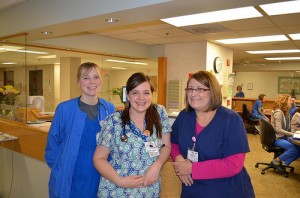Patient safety is a new health care discipline that focuses on analysis, prevention, and reporting of medical errors. The extent of medical errors leading to adverse outcomes was not well known until the 1990s when countries began reporting on such errors. The World Health Organization called patient safety a major concern after discovering it affected ten percent of patients worldwide.
The field of patient safety is still relatively new and is slowly developing a scientific framework for better understanding of how to improve care. There is significant research and literature across many disciplines that are informing the scientific work on patient safety. As such, there are continually new improvements including:
- Enhancing systems for reporting errors
- Adopting innovative technologies
- Developing economic incentives
- Educating consumers and providers
- Applying lessons learned from industry and business
How Prevalent Are Medical Errors?
In 1982, the ABC show 20/20 came out with an exposé called The Deep Sleep, which revealed shocking practices within the anesthesia profession. The producers stated that every year 6,000 Americans die from accidents associated with anesthesia. The show also provided specific case studies. In response, the American Society of Anesthesiologists created the Anesthesia Patient Safety Foundation (APSF) in 1984. The formation of the APSF marked the first time a professional organization used the term “patient safety” in their name.
In 1999, the Institute of Medicine (IOM) released a report called To Err is Human: Building a Safer Health System. In the book, IOM claimed there were 44,000 to 98,000 deaths per year attribute to medical errors in hospital. Of those, 7,000 could be attributed to errors in medication. Within two weeks of the release of the report, President Clinton called for changes.
Many Sources of Error
Human factors often play a part in medical errors. Some of these errors can be due to fatigue, depression, or variability in health care experience or training. Time pressures, diverse patients, and unfamiliar settings may also serve as sources of error. Providers may also recognize that an error was made but not understand the significance of the error.
Within the hospital system, there are a variety of possible failures that could lead to errors. Reliance on automated systems to prevent error can cause errors by taking control out of the hands of humans. Poor communication among healthcare providers is also a common problem. Issues as simple as drug names looking or sounding alike or cost-cutting measures can threaten patient safety.
Efforts to Improve Patient Safety
In order to improve patient safety, health care organizations are looking to diverse sources for programs that may be adapted to fit medical needs. One of those programs is the National Transportation Safety Board’s Aviation Safety Reporting System. This is a confidential system for report deficiencies and ways to provide data for planning improvements. In response to this, NASA and the VA have developed the Patient Safety Reporting System, which monitors patient safety through confidential, voluntary reports.
Electronic health records (EHR) are also able to reduce many types of errors related to emergent and preventive care, tests and procedures, and prescription drugs. EHR can also help with providing standard drug dosages, patient education information, allergy checks, and checks for the interactions drugs have with various other drugs and foods.
Another technology-based way to improve patient safety is Computerized Provider Order Entry (CPOE). CPOE has been shown to reduce errors in medications by 80 percent and harm to patients by 55 percent. As the name suggests, the doctor would directly input what medications the patient needs, and this would be automatically sent to someone who can fill the prescription.
Patient safety continues to be a concern for health care providers around the world. It is likely that everyone will be a victim of medical error at some point in their life. That is why it is important to bring up concerns one may have to a provider to make sure one is receiving the proper treatment.

